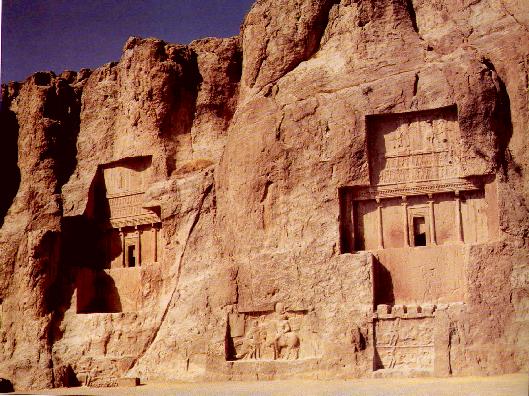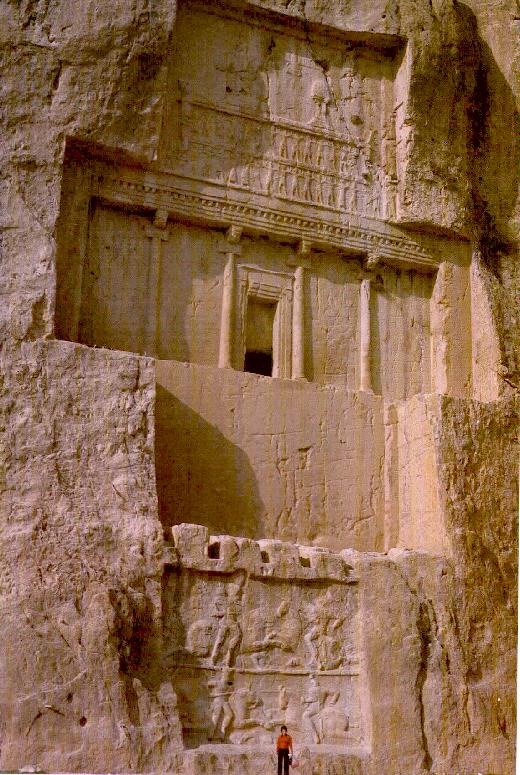

Four Achaemenid kings- Xerxes I, Darius I, and II, and Artaxerxes I- had their tombs cut into the cliff face at Nagsh-i Rustam. Only Darius I's on the right is identified by inscriptions. Each + shaped facade is over 75 feet high and 60 feet wide. The reliefs below the tombs were added in the 3rd century AD by Sassanian kings. The one in the middle shows Shahpour's Triumph over the Romans (Valerian). The cross + has deep spiritual meaning signifying ascendance to the supreme.

Darius the Great's crypt contains three chambers, each with three burial cists. The reliefs underneath were added 600 years later by the Sassanians. These depict Ardeshir and his son Shahpour in combat and defeating the Parthians.